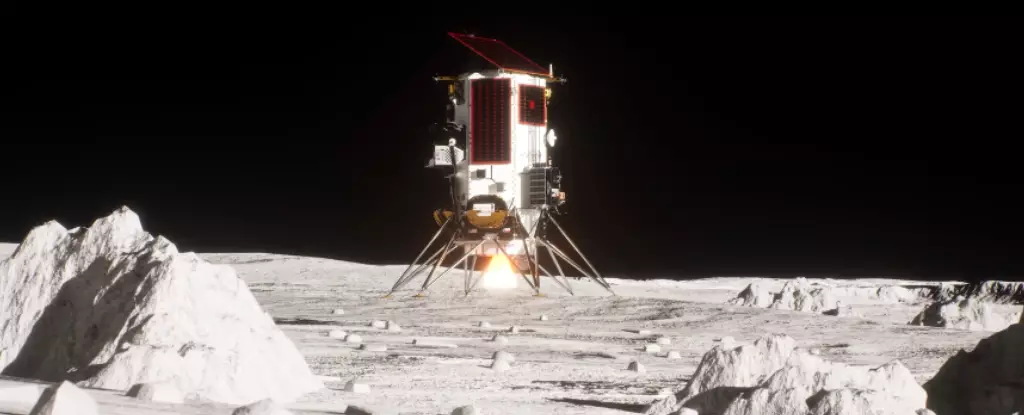Intuitive Machines, a Houston-based aerospace contender, has once again faced an unfortunate setback with its lunar lander, Athena, as its second attempt to achieve a soft landing resulted in less-than-ideal circumstances. After claiming the title of the first private company to place a vessel on the lunar surface, the soft underbelly of reality has mustered a haunting déjà vu. With the company’s inaugural mission marred by an awkward sideways landing, hopes were high for a breakthrough this time around. Instead, what transpired was an exhibition of engineering woes that has ignited conversation about the pitfalls of commercial space exploration.
An Ambitious Objective Compromised by Orientation
The stakes were higher than ever for Athena, which embarked on its mission to the distinctive Mons Mouton plateau, a site that had never seen a private lander before. Scheduled for a 12:32 PM ET landing, observers were met with agonizing silence on the live webcast that stretched well beyond the launch window. When communication finally resumed, it became clear that the optimism was misplaced. Company representatives, including CEO Steve Altemus, disclosed that Athena’s orientation was suboptimal—an aeronautical euphemism that hinted at potential mission-critical failures. They acknowledge a basic principle of space travel: orientation matters. A small error in landing angle can cascade into significant ramifications, affecting power generation and communication systems vital for operational success.
The Harsh Economics of Defeat
The immediate financial fallout was telling. Intuitive Machines’ share price plummeted by 20%, illustrating the unforgiving nature of the stock market when striving for celestial achievements. Investors, who trumpet grand visions of commercial lunar ventures, are left disillusioned. This decline further underlines a critical issue in the world of budding space startups—stakeholders’ appetite for risk in an industry where the binary outcomes are often success or utter failure. A single miscalculated landing has not just repercussions in the mission archives, but also on stock valuations.
Comparative Success Breeds Pressure
What amplifies the pressure is the recent success of competitors like Firefly Aerospace, which successfully landed its Blue Ghost lander on its first attempt—a feat that serves as a spotlight on Intuitive Machines’ gaffe. When surrounded by rival companies achieving tangible milestones, the expectation for flawless execution magnifies the scrutiny on those who do not share the same fate. The captivating allure of lunar landings has transformed the perception of success into a race, rather than a collective human endeavor.
Technical Shortcomings and a Necessary Reckoning
Intuitive Machines’ ambitions were hampered not just by an ill-fated landing but also by inherent concerns about the design of Athena itself. At a height reminiscent of a giraffe, the lander’s design raises stability issues that come to define its operational limitations. The technical upgrades touted prior to the mission, meant to address weaknesses inherent in their previous lander, Odysseus, appear to be insufficient in generating the desired results. As with any ambitious venture, blind spots remain an inevitability, and Intuitive Machines must confront the reality that innovative technology cannot simply offset the unpredictabilities of space exploration.
Future Prospects Diminished by Present Failures
While the mission was intended to conduct groundbreaking research—deploying a 4G cellular network aimed at connecting astronauts beyond Earth and drilling for lunar ice—it is uncertain how much of this can realistically be achieved with Athena’s compromised status. Besides the immediate need for a reevaluation of their technological frameworks, the fragility of trust between the company and its stakeholders shows just how quickly enthusiasm can turn to frustration. The aspirations of lofty lunar research starkly contrast with the pressing operational concerns brought about by a less-than-ideal position on the Moon.
Intuitive Machines is standing at a junction of idealism and stark reality. While the ambition to pioneer lunar research remains commendable, the consequences of failure heighten the necessity for critical assessment and a recalibration of expectations with respect to commercial space exploration. The path to success is rife with challenges, and organizations must learn not just how to reach for the stars but also how to land gracefully on solid ground.


Leave a Reply